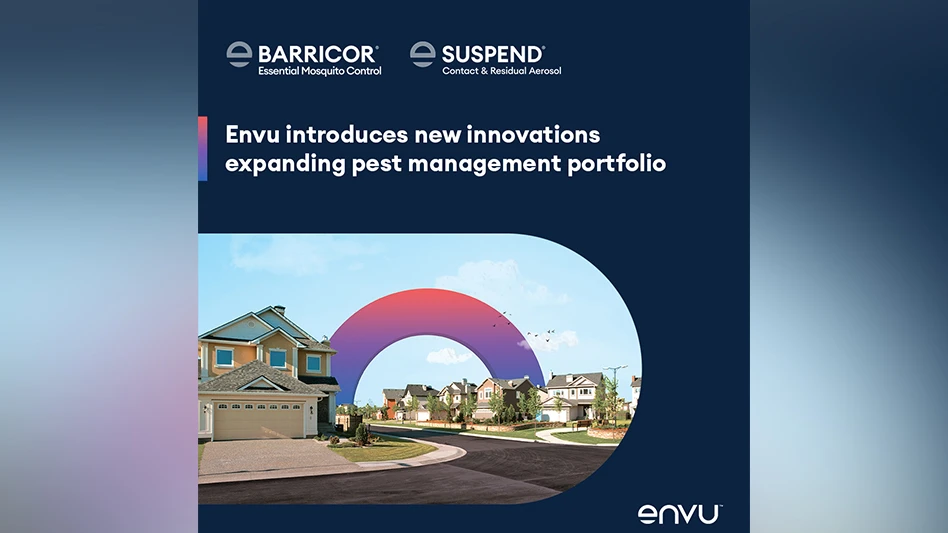The pest management industry, along with more than 50 trade associations, food processors, university researchers, distributors, manufacturers, and the Department of Agriculture, has responded in force to object to the U.S. Environmental Protection Agency's proposed withdrawal of food tolerances for fluoride and sulfuryl fluoride.
The proposed withdrawal would leave pest management professionals and their food industry customers without a treatment alternative for eliminating insects and rodents in many food-processing and -storage facilities.
If allowed to become reality, the proposed action could have a ripple effect on the availability, quality, safety, and price of food for consumers.
|
Dow AgroSciences Awaits EPA Decision The comment period on the U.S. Environmental Protection Agency's proposed rule to phase out the use of sulfuryl fluoride is closed, but the case for keeping this valuable tool is far from over. As the sole manufacturer of sulfuryl fluoride for post-harvest use in the United States, Dow AgroSciences was placed squarely in the spotlight when EPA issued their proposed action in January. The company immediately went to work to present its side of the story. "We were disappointed with the proposed rule since EPA had encouraged the industry toward using sulfuryl fluoride as a replacement for methyl bromide," said Justin Stewart, ProFume product manager for Dow AgroSciences. "Nevertheless, we are determined to show EPA that the technology is needed by the industry and consumers. EPA acknowledges this was a fluoride exposure issue, not a sulfuryl fluoride issue." Stewart said Dow AgroSciences joined a coalition of both industry and non-industry associations to submit comments to EPA in support of the continued use of sulfuryl fluoride to control pests in post-harvest foods. "The pest management industry and its customers need this valuable tool available to them," said Stewart. "Fumigation is a reliable, cost-effective technology and there is no viable alternative if it were to be phased out." Stewart pointed out sulfuryl fluoride is a critical tool in protecting foods, including imported foods, from pests which destroy and spoil food before it reaches a consumers' dinner table. If its usage was curtailed, it could lead to increased consumers' grocery bills and impact the quality of food. "Without cost-effective alternative treatments, food manufacturers would have to spend significantly more trying to protect their products from pests and ultimately those costs could be passed on to consumers," said Stewart. He said Dow AgroSciences was encouraged by the volume and depth of the supportive comments submitted to EPA and believes they demonstrate the importance of having sulfuryl fluoride continue to be available for use by pest management professionals. "We trust EPA will give full consideration to the comments and will follow an alternative administrative option to address the problem of severe dental fluorosis while preserving this essential tool for the industry," said Stewart. "We know the science is there and we hope EPA will see the real value of the technology." — Jeff Fenner |
A Little History. The action was spurred by the Fluoride Action Network, a Canton, N.Y.-based group that has waged a lengthy campaign to remove sulfuryl fluoride usage in food-processing facilities. The group claims the use of sulfuryl fluoride fumigant will introduce unacceptable levels of fluoride to consumers and can cause medical risks, mainly dental fluorosis, a condition where overexposure to fluoride can damage the enamel on teeth.
The group's website, while acknowledging most processed foods will not be fumigated, described the situation as "playing Russian roulette" and consumers will not know if the foods they are eating have been treated.
EPA opened public comment on the proposed three year phase out in January and closed comments on July 5.
Sulfuryl fluoride, which is used for food processing and commodities came into prominence in 2004 as an alternative to methyl bromide which drew criticism for its contributions to ozone layer depletion. Marketed by Dow AgroSciences under the product name ProFume, sulfuryl fluoride has been used as a structural fumigant in hundreds of facilities for years.
It is approved for direct treatment to harvested and processed food commodities such as cereal grains, dried fruit, tree nuts, coffee and cocoa beans, and has proven to be an effective treatment option in grain and food processing, and storage operations.
Reaction. Reaction to the proposed phase out has been strong both inside and outside the industry.
The National Pest Management Association led the industry's response and numerous food industry groups with an interest in maintaining a pest-free environment in their operations, submitted comments, including the American Farm Bureau Federation, American Seed Trade Association, Cocoa Merchants Association of America, North American Millers Association, and the USA Rice Federation.
The U.S. Department of Agriculture also weighed in, stating domestic and imported agriculture industries would be negatively impacted by the action, and it questioned the efficacy and practicality of the suggested EPA alternatives which include the use of phosphine gas, heat treatments, and micro-cleaning strategies.
While some of these strategies are currently employed by pest management professionals in various food industry accounts, there are limitations. For example, phosphine gas cannot be used in food processing accounts with high-tech or digital equipment because of the corrosive nature of the gas. It would eliminate the pests, but could cause serious damage to equipment, most of which carries a hefty price tag.
The same goes for heat. The industry performs heat treatments for various pests, but heat isn't suited for all accounts. For example, many flour mill operations, because they are older and the buildings not as "tight," cannot hold heat in and thus the treatment would be ineffective. Heat could also damage equipment in some facilities.
"If sulfuryl fluoride is taken away you are back to some very basic treatment strategies and, quite frankly, a lot of throwing away of food that has become infested or falls short of food industry and consumer standards," said Russ Ives, president of Rose Pest Solutions and a member of the Copesan which services commercial food facilities across the country. "It is important for the pest management industry to keep this significant treatment tool available."
EPA Perspective. The National Resources Defense Council, an organization that has had strong objections to the use of methyl bromide in the past, commented that while it supports the denial of the stay of sulfuryl fluoride tolerances, it opposed EPA's actions for uses where the agency has not come up with a safe and effective treatment alternative. In addition to the comments submitted to EPA, prominent members of Congress have asked EPA Administrator Lisa Jackson why EPA undertook the action and why it failed to take into account the harm and risk it poses to maintaining a pest-free, safe food supply.
Many industry observers say EPA did not research the issue as thoroughly as it should have and this is a situation where a legalistic interpretation of a statute threatens to override practicality. Even EPA acknowledges food-processing and -handling facilities, and the pest management professionals who service them, depend on sulfuryl fluoride to maintain a pest-free environment. All of which only makes industry representatives shake their head.
"Ninety-seven percent of a person's exposure to fluoride comes naturally or from dental products and treated water," said NPMA Senior Vice President Bob Rosenberg. "Fumigation residues constitute only three percent of a person's total exposure."
Rosenberg added the industry would like to know why EPA chose to address the issue of excessive fluoride exposure through the use of sulfuryl fluoride, which makes up a small percentage of a consumers exposure, and not the other areas such as toothpaste and drinking water.
"EPA acted with a degree of reluctance in this matter and did what they thought they were required to do by law," said Rosenberg. "Hopefully with the comments provided by this large coalition, we have given them some options to come up with a solution without compromising public health."
The author is partner of B Communications, www.b-communications.com, an integrated communications/marketing firm specializing in the needs of pest management professionals. He can be reached at jfenner@giemedia.com.

Explore the September 2011 Issue
Check out more from this issue and find your next story to read.
Latest from Pest Control Technology
- How to Get Rid of Odorous House Ants
- Massey Services Promotes Herndon to Director of Sales for Multi-Family Division
- NPMA Announces First Recipients of NPMA PRO Certified Credential
- Pestmaster of the Hudson Valley Acquires Catskill Animal Damage Control
- Photo Slideshow: Ant Identification Tips
- Video: Top 10 PCT Photo Contest Finalists
- UF/IFAS Study Reveals Boats as Perfect Vessels for Global Termite Spread
- Pest Control Consultants (Iowa) Earns Pinnacle Performance Award





